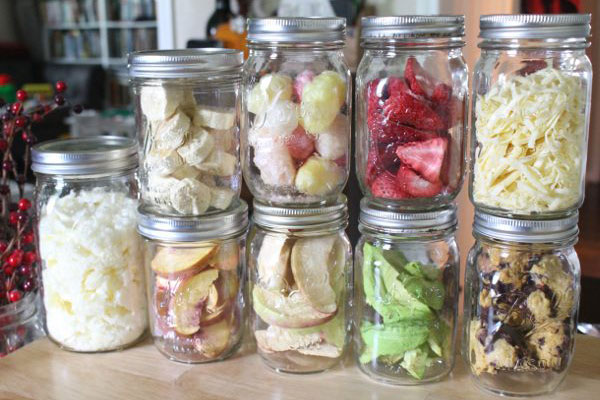As a qualified food enthusiast, you certainly won’t miss out on various freeze-dried delicacies. How much do you know about freeze-dried food? Let’s learn more about it together.

What Foods Are Best for Freeze Drying?
Most foods can be freeze-dried, and the following are some of the best ones for this process:
Fruits
- Strawberries
- Blueberries
- Apple slices
- Banana slices
- Cherries
- Mangoes
Vegetables
- Peas
- Corn
- Carrots
- Spinach
- Broccoli
Meat and Seafood
- Chicken
- Beef
- Pork
- Fish
- Shrimp
Dairy Products
- Cheese
- Yogurt
- Milk
- Breast milk
Candy
- Various candies such as Skittles, chocolate, gummies, etc.

What Foods Cannot Be Freeze Dried?
High-fat, high-sugar, and gel-like foods are not suitable for freeze drying. Specifically:
High-Fat Foods
- Butter
- Olive oil
- Fried foods
High-Sugar Foods
- Maple syrup
- Honey
- Syrups
Gel-Like or Paste-Like Foods
- Jelly
- Pudding
How Long Can Freeze-Dried Foods Be Stored?
You must be curious about how long freeze-dried foods can be stored.
Since more than 99% of the water is removed during the freeze-drying process, the shelf life of freeze-dried foods is much longer than that of foods preserved by traditional methods. Freeze-dried foods packaged in vacuum-sealed bags or sealed jars can be stored for more than 25 years under cool, dry conditions away from direct sunlight.
How to Determine If Freeze-Dried Foods Have Spoiled?
Generally, well-packaged freeze-dried foods are difficult to spoil. Most spoilage of freeze-dried foods is due to packaging damage, leading to exposure to air. We can determine if freeze-dried foods have spoiled through the following aspects:
Packaging Check
- Seal Integrity: Check if the packaging is intact. If damaged, the food may have absorbed moisture.
- Swelling: If vacuum packaging swells, microbial activity may have caused food spoilage.
Appearance Check
- Color Change: If the food’s color darkens or looks abnormal, it may have spoiled.
- Texture Change: Freeze-dried food should be crisp and hard. If it becomes soft or sticky, it may have absorbed moisture or spoiled.
Smell Check
- Off Odors: Normal freeze-dried food should have no off odors or retain its original aroma. If it smells moldy, sour, or has other abnormal smells, it may have spoiled.
Taste
- Abnormal Taste: If the food tastes off or bitter, it may have spoiled.
Storage Time
- Shelf Life: Check the shelf life. If expired, the food may have spoiled.
- Storage Conditions: If stored in high temperature or high humidity, the food is prone to spoilage.
Do Freeze-Dried Foods Need to Be Vacuum Sealed?
If freeze-dried foods do not need to be stored for a long time, for instance, only a few days before consumption, vacuum sealing is unnecessary. However, if freeze-dried foods need to be stored for several years or longer, vacuum-sealed packaging is required. Of course, the storage environment is also crucial. We recommend storing in a cool, dry place without direct sunlight.

Can Bacteria Grow on Freeze-Dried Foods?
Generally, the freeze-drying process removes almost all moisture from the food, making it difficult for bacteria to grow. However, under certain conditions, bacteria may still proliferate on freeze-dried foods.
If the packaging is damaged or not completely sealed, moisture can be absorbed, leading to bacterial growth on the freeze-dried food.
These are some common questions about freeze-dried food. If you want to learn more, you can refer to the following articles for further information:
Fruit Freeze Dryer Machine: Making Life Better
Freeze Dried Cherries: Preserving Flavor And Nutrition
Freeze Dry Bananas: A Guide To Freeze Drying Bananas
Freeze-Dried Blueberries: Bringing Health And Nutrition
Freeze Drying Meat Preservation: Everything You Need To Know
Freeze Dried Sweets: Delicious Snacks You Can Freeze Dry At Home
Freeze-Dried Coffee Machine: Preserving The Delightful Flavor Of Coffee






